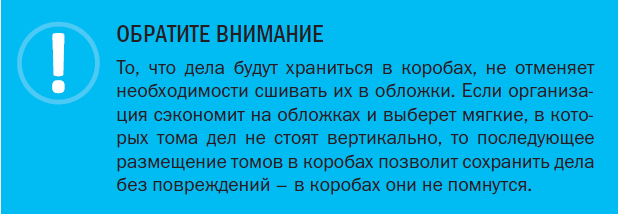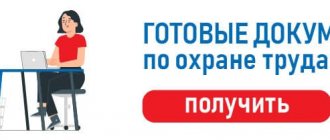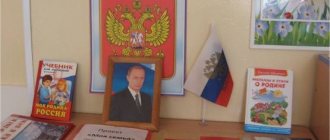CONSTANTLY – HOW MUCH IS THIS?
The storage periods for documents are established by standard lists:
- A list of standard management archival documents generated in the course of the activities of state bodies, local governments and organizations, indicating storage periods (approved by Order of the Ministry of Culture of Russia dated 08/25/2010 No. 558, as amended on 02/16/2016; hereinafter referred to as the 2010 List);
- A list of standard archival documents generated in the scientific, technical and production activities of organizations, indicating storage periods (approved by Order of the Ministry of Culture of Russia dated July 31, 2007 No. 1182, as amended on April 28, 2011; hereinafter referred to as the 2007 List).
The document storage period can also be established in industry regulations. In this case, the word “permanently” can be replaced by a synonym, for example, “indefinitely”.
- If the organization is not the source of acquisition of the state archive.
Column 3 “Document storage period” of the 2010 List contains a footnote <*>, which states that the “permanent” (Permanent) storage period of documents in organizations that are not sources of acquisition of state and municipal archives cannot be less than ten years. We are talking only about those documents whose storage periods are indicated in the 2010 List.
Thus, if an organization is not the source of acquisition of the state (municipal) archive, it must store documents with a “permanent” period of at least 10 years, and then is free to destroy them as usual, along with files that have expired by that time. At the same time, it is advisable to establish a minimum storage period for these documents in the instructions for office work or in other local regulations on the storage of documents. For example:
Since the Company is not an organization that is a source of acquisition of state (municipal) archives, the “permanent” storage period for management documents is 10 years.
note
The 2007 List does not contain any such footnotes or instructions issued in any other way. Therefore, if a document according to the 2007 List has a “permanent” shelf life, this means storage for the entire existence of the organization.
- If the organization is the source of acquisition of the state archive, then the storage period “permanently” means “the entire existence of the organization.” If the liquidated organization has a successor, then “permanently” will last as long as the successor organization exists. If an organization is liquidated without successors, the state archive to which it belongs conducts an examination of the value of documents with a permanent shelf life and takes into its storage those that it considers useful. Documents that are not of interest to the archive may be destroyed.
WE FORM AND SYSTEMATIZE CASES AND DOCUMENTS
Features of case formation
Preparing a file for storage begins long before the document is completed in office work. All DOE processes are performed sequentially and are interconnected.
note
Already at the stage of receiving an incoming document or creating an outgoing one, you need to understand in which file the document will be placed and what are the features of the formation of this file.
For example, orders for core activities must be taken into account and formed strictly separately from orders for personnel. The opposite is often the case with small organizations, where the secretary combines the functions of a clerk and a personnel officer. Before sending such a composite file for storage, you will have to disband it, and this is extra work.
As for correspondence, it should be formed according to the “request-response” principle, when each letter received or sent is filed according to its question, and not by type (incoming or outgoing). This must be done immediately, otherwise, when it comes time to send the files for storage, the secretary will spend a huge amount of time creating a correspondence history.
Ways to organize documents
Documents in the file can be systematized:
- Chronologically, that is, according to the time of creation. As a rule, in such cases, documents are arranged strictly by registration numbers, for example:
| Document and its registration data | Case sheet number (volume) |
| Order dated January 12, 2015 No. 1 | 1 |
| Order dated January 13, 2015 No. 2 | 2 |
| Order dated January 13, 2015 No. 3 | 3 |
| Order dated January 16, 2015 No. 4 | 4 |
| Order dated January 19, 2015 No. 5 | 5 |
| … |
- Alphabetically - for example, by last name or project name:
| Document and its registration data | Case sheet number (volume) |
| Project "Astra" | 1-10 |
| Project "Cornflower" | 11-20 |
| Project "Gladiolus" | 21-30 |
| Project "Bell" | 31-40 |
| Project "Mimosa" | 41-50 |
| […] |
- In a combined way - first the documents are arranged in alphabetical order, and then also chronologically, for example:
| Document and its registration data | Case sheet number (volume) |
| Correspondence with Astra LLC | |
| Sheet separator | 1 |
| Ref. No. 53 from 01/14/2015 | 2–4 |
| In. No. 243 from 01/16/2015 | 5–9 |
| Ref. No. 105 from 01/23/2015 | 10 |
| In. No. 341 from 01/28/2015 | 11 |
| Correspondence with Vasilek LLC | |
| Sheet separator | 12 |
| In. No. 14 from 01/12/2015 | 13–14 |
| Ref. No. 18 from 01/13/2015 | 15 |
| In. No. 201 from 01/15/2015 | 16 |
Documents divided into alphabetical blocks are separated from each other, for example, by colored separators. This is optional, but it makes working with the volume much easier. When numbering sheets, separators are numbered in the general order.
Thus, by the time the files are filed for storage, the documents will already be correctly formed into files, and within the files – systematized.
MAGAZINE Preschooler.RF
Consultation for educators “Preparing documentation is one of the competencies of a teacher”In the work of a teacher, as in any other activity, order and planning are necessary. Only under these conditions is it possible to obtain satisfaction. It is no secret that paperwork is often given a secondary role. However, timely and correctly completed documentation can become our first assistant, because order in documentation, the ability to quickly find and analyze available materials will help the teacher in preparing for the new school year and teacher certification.
The teacher’s documentation includes the following sub-items:
- Mandatory documentation, which includes all documents related to the organization of the educational process.
- Information and regulatory documentation, this subclause includes all service and job descriptions, general information about the group, information about the methodological support of the educational process of the group.
Mandatory documentation.
- Working programm.
- Calendar plan for educational work,
- . Children's attendance sheet.
- Group passport.
Information and regulatory documentation of the teacher:
1. Service and job descriptions:
1. 1. Job description of a preschool teacher.
1. 2. Instructions for protecting the life and health of children in preschool educational institutions.
1. 3. Seasonal safety instructions for working on site.
- 4. Safety instructions when organizing classes on the physical education site.
- General information about the group:
- 1. List of children in the group (indicating the date of birth and date of admission to the preschool educational institution).
- 2. Group modes (for cold, warm, adaptation periods of the year).
- 3. GCD grid (main and additional classes in clubs).
- 4. Adaptation sheets (for newly admitted children).
- 5. Information about children and their parents.
- Methodological support of the educational process
- 1. The main areas of work and annual tasks of the MDOU for the current year.
- 2. List of programs and pedagogical technologies used by the teacher (compiled together with the senior teacher).
- 3. Long-term planning by program sections.
- 4. Materials for diagnostics for the main sections of the program.
- 5. Memos, advertising brochures for teachers based on the results of regional and city events (courses, seminars, methodological associations).
Let's try to consider the meaning of each document separately.
1. Group work program.
The teacher’s work program must be drawn up on the basis of the educational program of the preschool educational institution. It must be built in accordance with the age, psychological and individual characteristics of children.
Approximate structure of a teacher’s work program
- Title page (name, program status, program author)
- Explanatory note (concept, goals and objectives of the course, structure of the program and explanations to it, features of the program)
- Study load volume
- Calendar-thematic plan
- The content of educational material, including the federal and regional components of the state educational standard, provided for by the sample program
- System for monitoring children’s achievement of the planned results of mastering the program
- Bibliography
- Group calendar plan.
Technology for developing calendar plans
- The general algorithm is canvas.
- Start writing a plan with routine moments: morning; day; evening; for at least two weeks.
- The design of the plan must meet aesthetic requirements, since this is the calling card of the preschool educational institution.
- Take into account the ratio of children’s load: emotional; intellectual; physical.
- Consider the degree of complexity of the material.
- Compliance with software and methodological support.
- Include all activities.
- To trace the complication of techniques, not only visual and verbal, but also such as collective search, conversation, educational games.
2. 1. Algorithm for drawing up a teacher’s calendar plan.
- Title page
- List of children of the group, indicating the date of birth of the children.
For correctional groups (speech therapy, defectology), a list of children by subgroup, indicating the diagnosis of PMPC.
- GCD schedule for the week (according to the number of classes in the program and the requirements of sanitary and epidemiological rules and regulations 2.4. 1. 3049-13)
- Planning morning exercises (with changes for week 2)
- Complex of articulatory gymnastics.
- Finger gymnastics complex.
- Awakening gymnastics complex
- Plan for interaction with parents.
- Planning specially organized classes (indicating the day and date),
planning joint activities between the teacher and children,
planning children's independent activities.
3. Attendance report for children in the group.
An attendance sheet is necessary to record the number of children in the group daily. This helps ensure that children are fed and that classes are carried out smoothly (handouts for each child). Also, the attendance sheet helps the teacher and medical personnel track the incidence of children in a certain period.
4. Information about children and their parents.
In officially accepted practice, a special journal (notebook) usually contains the following information about the children attending the group:
- Last name, first name of the child
- Date of Birth
- Residence address and telephone numbers
- Full names of parents, grandparents
5. Log of reception and delivery of shifts.
This log indicates the reception and delivery of shifts by two teachers working in this group.
The log indicates the date and records the number of children that the teacher accepted into the group, and notes are made on the children’s health status (skin, temperature, lice). The teacher also makes notes about the changes that occurred in the group during the first half of the day (children going home, due to parents, child getting sick, etc.). The second teacher, who has taken up work and works in the afternoon, also makes a note in the journal about how many children he received, how the children slept, notes which children went home (healthy, or one of the children had a fever , injury could occur, etc.). All of the above should be reflected in the shift log.
6. Drinking regime log.
In accordance with the SanPiN regime, the drinking regime in preschool educational institutions is organized using boiled water, provided that it is stored for no more than 3 hours.
Therefore, the teacher must change the water in the carafe every next three hours (regardless of whether it has been used or not). The container is processed before each water intake, and the time of each water intake is recorded in the group’s drinking regime log.
7. Observation log for long-term absent children.
In preschool age groups, an observation log is kept for long-term absent children. Children who were absent after suffering from an illness, as well as absence for more than 3 days (except for weekends and holidays), are accepted into preschool organizations only if they have a certificate from a local pediatrician indicating the diagnosis and duration of the disease.
The magazine has a morning and evening filter, designed in the form of a table. In early age groups, a notebook is kept for daily observation of children, where morning and evening filters are noted (temperature, pharynx, skin, lice), as well as stool mesh (observation is carried out in the first and second half of the day).
8. Quartz journal.
The quartz log is necessary to track the implementation of preventive measures due to epidemiological outbreaks in the group.
The log records the date of quartzing, the presence of a quartzed room, disinfection conditions, duration and mode of irradiation.
9. Self-education magazine.
Society constantly makes demands on the education system. The teacher is obliged to get acquainted with innovations in a timely manner, replenish professional potential, improve pedagogical skills, using new educational technologies in practice. The teacher should keep a notebook on self-education, writing down in it the name of the literature studied, the title and author of the article that interested him, indicating the pages with the most significant information. Next, you should discuss the studied material with colleagues at a pedagogical meeting or teachers' council. When using innovations, it is necessary to purchase or produce teaching aids according to the author’s recommendations. those. present the practical application of the studied topic. The topic of self-education must correspond to the objectives of the preschool educational institution for the new academic year.
10. Individual child development map.
The purpose of the Card is to organize assistance to children and teachers in creating optimal learning conditions, taking into account individual characteristics based on a comprehensive diagnostic examination.
11. Monitoring.
The teacher should carry out diagnostics at the beginning, middle and end of the school year, which will give him the opportunity to compare the results of children’s assimilation of the program and timely correction of cognitive processes towards the child’s achievement of age norms.
All monitoring results are reflected in several documents;
- Sections for each educational area.
- A summary table dated by the date and month of the survey.
- Monitoring development level chart.
- Information certificate for the beginning of diagnosis and analytical certificate for the middle and end of the year.
Technology for compiling an Information Certificate.
- The general indicator of the level of mastery of program material is indicated, as well as what the percentage is equal to.
- The number of children, their percentage, is recorded for each level of development of mastering program material.
- The percentage of children is indicated (their last names and first names are written down) who, based on the results of the diagnostic examination, showed a low level of mastery of the program material.
- The supposed causes of this phenomenon are indicated.
- An analysis is made of the quality of children’s learning in sections of educational areas of the program for each level.
- The suspected cause of the low level is indicated.
- Conclusions are drawn.
- A comparative diagnostic result is carried out for the year in the form of a diagram (beginning of the year, middle, end of the year).
- It is indicated who compiled the certificate and signature.
- Kindergarten group passport.
A kindergarten group passport is a document that reflects the structure, conditions, content of the work of this group, as well as the most important indicators of its activities.
The kindergarten group passport is developed on the basis of the Group Regulations and reflects its focus (general developmental, compensatory, combined, health-improving).
Approximate contents of the group passport:
- Group (name, age, focus).
- Information about teachers working with children (full name, education, work experience, qualifications, information about course preparation).
- List of children with dates of birth.
- Information about parents.
- Social passport of the group.
(Includes information about the child’s full name, date of birth, parents’ full name, information about children from single-parent families, large families, children in care, children whose parents are disabled, families in in a socially dangerous situation, low-income families)
- Attendance sheet.
- Anthropometric data of the children in the group.
(An anthropometric study necessarily includes the measurement of basic anthropometric indicators (height, body weight, chest and head circumference. Anthropometric study is carried out 2 times a year. Spring - autumn)
- Nosology of the disease.
(The diagnoses of the children with whom they were admitted to the preschool educational institution are indicated, these are main, speech and accompanying)
- Children's health sheet.
Teachers work closely with the kindergarten medical staff. In practice, it is important to develop a differentiated approach to children, taking into account their health status. For this purpose, groups have so-called “Health Sheets” , which are filled out by medical personnel. As you know, for the formation of correct posture and the prevention of visual impairment, the correct seating of children at the table is of no small importance, for which a set of furniture is selected for each child. The height and weight of children are determined 2 times a year, respectively, a set of furniture should be determined 2 times a year.
The doctor distributes children into health groups.
According to the results of Prof. examinations (carried out 2 times a year in kindergarten groups and 4 times a year in early age groups), depending on the nature and severity of deviations in the children’s health, the doctor gives recommendations, recording them in documents. In the practical work of a teacher, it is the recommendations that are important, and not the clinical diagnosis (it is a medical secret). All of the above is reflected in the “Health Sheet” for each child.
- List of medical prescriptions.
The medical prescription sheet indicates the date, weight of the child, and health group.
In compensatory groups, the conclusion of a teacher - defectologist, or a teacher - speech therapist, the conclusion of a teacher - psychologist is included.
- Group equipment.
This document is drawn up in the form of a table, which indicates all the equipment of the group (furniture) and its quantity.
- The state of conditions for protecting the life and health of children in the group.
(In this document, the teacher notes the condition of the furniture, group premises, lighting, the condition of lesson aids, the condition of game materials, the selection of game materials, and a note is made about who checked all of the above. This check is carried out every week, throughout the year .Except for the time when the preschool is closed for scheduled repairs).
- The state of conditions for protecting the life and health of children in the group.
In this document, on a weekly basis, throughout the year, the condition of the group site, the fencing of the site, and the removed material are noted. The safety of the walk, the equipment of the site, and outdoor play material are noted. During the winter period, the area is icy. And a mark is placed on who carried out the control. (Head of preschool educational institution or deputy head of VOR.)
- Service and job descriptions:
- Job description of a teacher.
- Job description of a junior teacher.
- Occupational safety instructions for educators.
- Labor safety instructions for junior teachers.
- Instructions for the safety of sporting events, attractions, and outdoor games.
- Instruction No. 50 for the use of carbon dioxide fire extinguishers.
- The plan is an instruction that determines the actions of the staff of the MADOU kindergarten No. 1 to ensure the safe and quick evacuation of children in the event of a fire.
- Instructions for personnel actions in the event of a fire in the building.
- Operating instructions for the bactericidal irradiator OBN - 45OP.
- Teacher's instructions for preventing children's road injuries.
- First aid in case of accidents.
| Next > |
WE PREPARE DOCUMENTS FOR REGISTRATION
- We remove unnecessary things. Most likely, until now the documents were kept in filing folders. It is too early to remove documents from them. To begin, let's look through each folder and remove from it drafts, doublet (repeated) copies of documents, sheets of notes, and from the documents themselves - paper clips and staplers.
- We divide things into volumes. At this stage, we determine how many volumes of the case will end up and how best to divide the documents into volumes: by month, by number of sheets, by counterparties, by last names, etc. In accordance with clause 4.20 of the Rules for organizing the storage, acquisition, recording and use of documents of the Archival Fund of the Russian Federation and other documents in government bodies, local governments and organizations (approved by order of the Ministry of Culture of Russia dated March 31, 2015 No. 526; hereinafter referred to as the 2015 Rules) Each case should contain no more than 250 sheets.
It is not at all necessary to come up with some kind of system for dividing documents into volumes; it is enough to follow this rule. The uniform distribution of sheets, firstly, allows you to create volumes that are approximately equal in thickness, and secondly, it makes it easier to find documents in your file. Thus, if the file contains approximately 300 sheets, then it is better to make two volumes of 150 sheets each, rather than 250 and 50.
Then we carefully remove the documents from the folders, distribute them into volumes and begin processing them for storage.
Methodological recommendations for the preparation of group documentation; methodological development on the topic
Family social passport
Passport completion date______________________________
- Resides (underline and add full name, place of work):
- with parents;
- with mother or father;
- with a guardian, trustee;
- with stepfather, stepmother;
- in a foster family;
- in a government agency;
- with other family members;
- with strangers
_________________________________________________________________________________________________________________________________________________________________________________________________________________________________________________________________________________________________________________________________________________________________________________________________
Number of family members: _________________________________
- Actual address of residence of the family (child)
______________________________________________________________________________________________________________________________________________________________________________________________________________________________
- Living conditions: Separate apartment House
The apartment is rented, a dorm room.
No housing
- Social conditions (underline or add):
- favorable living conditions have been created,
- there are no conditions for education and recreation (the apartment is dirty, there is no bed linen, no furniture, no food, strangers are drunk),
- house, apartment or part thereof is rented
____________________________________________________________________________________________________________________________________________________________________________________________________________________________________________________________________________________________
- Social status of the family (underline or add):
- low-income,
- in a socially dangerous situation,
- full,
- large family,
- divorced,
- single mother,
- widow/widower,
- secondary marriage of mother/father,
- refugees,
- forced migrants ________________________________________________________________________________________________________________________________________________________________________________________________________________________________________________________________________________________________
- Parents' status (underline or add):
- disabled people (mother, father),
- limited rights (mother, father),
- deprived of parental rights (mother-father),
- unemployed (mother, father) _____________________________________________________________________________________________________________________________________________________________________________________________________________________
- Parents’ lifestyle (underline or add):
- abuse alcohol (mother, father),
- use drugs (mother, father);
- lead an antisocial lifestyle (mother, father);
- avoid raising children (mother, father);
- children are abused;
- are registered with the Department of Internal Affairs (mother, father),
- are registered with the KDN (mother, father);
- is in prison (mother, father, other family members);
- can't cope with education
- lead a secluded life,
- care for sick parents and disabled children;
- devote a lot of time to work (mother, father);
- take care of the child (mother, father) ___________________________________________________________________________________________________________________________________________________________________________________________________________________________________________________________________________________________________________________________________________________________________________________
- Number of children in the family
Children under 18 years of age (indicate name, date of birth, which preschool/educational institution they attend)
___________________________________________________________________________________________________________________________________________________________________________________________________________________________________________________________________________________________________________________________________________________________________________________________________________________________________________________________________________________________________________________________________________________________
- Family type (underline as appropriate):
- Prosperous (parents are morally stable, master the culture of education, the emotional atmosphere of the family is positive)
- Unfavorable, including:
A) pedagogically incompetent (parents do not have a culture of upbringing, signs: lack of unity of requirements, neglect, abuse, systematic punishment, low awareness of the child’s interests and behavior outside of school);
B) morally dysfunctional (parents lead an immoral lifestyle, drink alcohol, do not work anywhere, have a criminal record, and are not involved in raising children)
C) conflict (there is a dysfunctional emotional atmosphere in the family: there are constant conflicts between parents, parents are constantly irritable, cruel, intolerant)
- The nature of the relationship between parents and child (underline as appropriate):
- family dictatorship (systematic suppression of the child’s initiative and self-esteem);
- excessive care (satisfying all the child’s needs, protecting him from difficulties, worries and efforts);
- connivance (avoidance of active participation and passivity in raising a child, recognition of the child’s complete autonomy);
- cooperation (relationships of mutual respect, shared experiences of joy, grief, etc.)
- Family relationship style (underline as appropriate):
- conniving and condescending;
- all-round defense position;
- demonstrative;
- pedantically suspicious;
- exhorting;
- detached and indifferent;
- education according to the “idol in the family” type;
- inconsistent
- Organization of work and rest schedule.
- What responsibilities does the child perform in the family?
______________________________________________________________________________________________________________________________________________
- Does he follow a daily routine?
______________________________________________________________________________________________________________________________________________
- What do you do in your free time? ______________________________________________________________________________________________________________________________________________
WE FILE CASES FOR STORAGE
Depending on the storage period, cases can be processed partially or completely. All files opened in the organization and having a storage period of more than 5 years are partially documented, with the exception of personnel files. The following cases are subject to full registration for storage, in accordance with the 2015 Rules:
- permanent shelf life;
- temporary (over 10 years) storage period;
- documents on personnel ( all , including those that have a five-year shelf life).
Stages of design of each volume. Complete registration of each volume of the case for storage occurs in the following order:
1) numbering of case sheets;
2) drawing up an internal inventory of the case;
3) drawing up a document certifying the case;
4) filing or binding of case documents;
5) design of the cover (title page).
Stage one: numbering the volume sheets
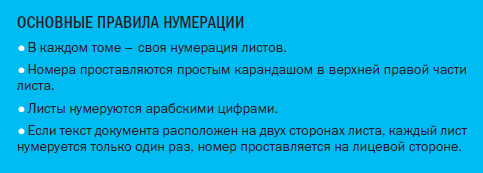
If the documents were previously numbered by someone in the same upper right corner and the new numbering does not coincide with the old one, then cross out the old number and write a new one next to it. Numbers placed in other parts of the sheet do not need to be corrected. If the volume includes a brochure with its own page numbering, then each sheet, including the cover, receives its own number in the general order.
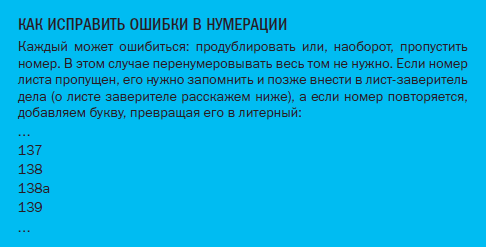
Each numbered volume can have a sticker with the following information:
- total number of sheets;
- missing numbers;
- letter numbers.
This information will be useful to us a little later when drawing up a document certifying the case.
If there are several missing and lettered numbers in the volume, then they must be taken into account when calculating the number of sheets. For example, if there are 100 sheets of numbers in a volume, but there are three missing numbers and two letter numbers, then the total number of sheets in the volume will be 99 (100 – 3 +2).
The 2015 rules say nothing about the number of corrections in volume numbering. Obviously, if there are too many errors, then it is better to renumber the sheets. However, what meaning this “too much” begins with is unknown. In this case, we recommend that you familiarize yourself with clause 75 of the Rules of Notarial Office Work (approved by the decision of the FNP Board of December 17, 2012, by order of the Ministry of Justice of Russia dated April 16, 2014 No. 78):
Extraction
from the Rules of notarial office work
75. […] If more than 5 errors are made when numbering the sheets in a case (volume), the sheets of the case (volume) are numbered again.
[…]
This rule is not necessary for general office work, but at least it gives an idea of the number of errors when it is better to renumber the volume.
Stage two: compiling an internal inventory of the volume
It is not always necessary to create an internal inventory of the volume's documents. Let's quote the 2015 Rules:
Extraction
from the Rules for organizing storage, acquisition, recording and use of documents of the Archival Fund of the Russian Federation
and other documents in government bodies, local governments and organizations
4.30. To record documents of certain categories of cases on paper (personal, court files, materials of criminal cases, cases on awarding academic degrees and conferring academic titles, cases related to the issuance of copyright certificates and patent inventions), an internal inventory of case documents is compiled.
[…]
The internal inventory is a kind of table of contents for the volume.
The secretary, if necessary, can create an internal inventory for other categories of cases. Here is what they say about this: Basic rules for the work of archives of organizations (approved by the decision of the Board of Rosarkhiv dated 02/06/2002):
Extraction
from the Basic Rules for the Operation of Organizational Archives
3.6.17. An internal inventory of case documents is compiled to record documents of permanent and temporary (over 10 years) storage, the recording of which is caused by the specifics of this documentation (especially valuable, personal, judicial, investigative cases, etc.), as well as to record cases of permanent and temporary ( over 10 years) storage, formed according to types of documents, the headings of which do not reveal the specific content of the document.
[…]
Thus, it is possible to compile an internal inventory both with orders for the main activity (especially if, due to incorrect systematization, the numbering in it was violated), and also with correspondence, if this makes it easier to use the volumes.
The internal inventory form is given in the 2015 Rules (Appendix No. 27). The inventory has its own numbering of sheets, which can be entered automatically at the stage of creating a document in MS Word (Example 1).
Stage three: we draw up a document certifying the case
A certification sheet is drawn up for each volume of the case. The form of the sheet is also contained in the 2015 Rules (Appendix No. 8). It’s easy to fill out: we already know how many sheets there are in each volume, as well as how many missing and lettered numbers there are among them. As for the “features of physical condition”, we are talking about:
- about torn sheets;
- glued sheets;
- brochures, bound and sealed documents included in the volume;
- sheets of a larger format than most in the volume, and other non-standard documents for this volume (Example 2).
Stage four: stitching the volume
- Choosing a cover. Documents with a permanent shelf life are placed in cardboard covers specially designed for permanent storage documents (Fig. 1). It’s easier to find them on the websites of online stores, rather than in retail stores - the product is not the most popular, so people often forget to put it on the counter.
The cardboard binder is complemented by a flexible wide spine with an adhesive layer. The top and bottom covers have a crease with a 25 mm indentation from the left edge, which allows you to leaf through the case like a book and copy sheets without difficulty.
A volume decorated with such a cover looks like an ordinary book, only in a large format. Volumes designed in this way can be placed vertically on a shelf without fear that they will bend, crushing the contents.
- Making the cover. If management considers it too expensive, the secretary will have to pick up scissors, cardboard and create the covers himself. However, you can make decent covers only if you can find high-quality cardboard, cut into sheets equal to or slightly larger than A4. Nothing good will come from the usual “For children's creativity”.
To make your own cover, you will need cardboard, a sheet of vinyl vinyl (a durable, waterproof paper-based binding material) and double-sided tape.
The principle of stitching together purchased and homemade covers is the same:
1. Place the bottom cover, documents and top cover together, drill and sew the binding.
2. Wrap the soft material (if you make it yourself, a strip of vinyl vinyl) down behind the bottom cover and stick the tape tightly at the bottom (Fig. 2).
As a result, the homemade cover will look almost the same as in Fig. 3.
- We use a hole punch. Since documents are stitched in 4 punctures, it is better to use special hole punchers for 4 punctures, which punch a stack of documents from 150 to 300 sheets at a time (Fig. 4, 5).
You can also use a regular hole punch for 10 sheets with two holes, however, you will have to punch these ten sheets twice. The distance between the four holes should be 8 cm (in accordance with the recommendations of GOST 1791472 “Covers for long-term storage cases. Technical conditions”), so the value on the meter should be set to “888”.

Before punching holes in the volume, you need to arrange the case documents in the following order:
1) internal inventory (if it was created);
2) case documents;
3) certification sheet.
- We select a needle and thread. The sewing needle is too small, it is better to use a bag needle (the so-called “gypsy”) - long (about 12 cm) and with a wide eye. You will need a strong thread, but you can fold it several times using regular thread. You can also sew with bank twine, but it is not easy to thread it even into a “gypsy” needle.
The length of the thread for a standard tom is approximately 1 meter. It is best to determine the optimal length for yourself experimentally - already on the third volume you sew it will become clear how much it will be needed. There is no need to tie a knot at the end of the thread, as with normal sewing - the ends will still be cut to the optimal length. If the volume was pierced (punched, drilled) carefully, there will be no problems with threading, since the diameter of the needle is much smaller than the diameter of the hole from the drill or hole punch.
The direction of the needle and thread when sewing a volume is shown in Figure 6.
After both ends of the thread are pulled out from the back of the volume, they are tied (not tightly, so that the volume can not only be opened, but also, if necessary, make a copy of any document, but also not loosely, so that the sheets of the file do not “walk”) and are circumcised.
Please note: in general and personnel records management, it is not necessary to remove the ends of the threads from the inside of the cover and fasten them with a certification sticker. The ends are trimmed and, if possible, hidden under the cover. If there is no cover, they are simply displayed from the inside without any further manipulation.
Stage five: designing the title page (cover) of the volume
The form of the title page of the case is given in the Rules 2015 (Appendix No. 28). Filling it out usually does not cause any difficulties. Just remember that the top line of the cover “Name of the state (municipal) archive” remains blank. If the case ever ends up in the state archives, its employees will fill out this line themselves.
In the lower left corner of the title page the archival code of the case is affixed: fund number, inventory number and the number of this storage unit according to the inventory (Example 3).
We glue the title page onto the cover of the volume. It is best to use PVA glue, but then the case must be immediately placed under a press for several hours, otherwise the title page will stick unevenly and wrinkle in places. The least suitable materials for this are glue sticks (the cover will come off after a couple of hours) and office glue (too liquid and will ruin the title page so that no press can save it). Printing covers on sheets with an adhesive layer is expensive and ineffective: the “adhesive layer” on them is conditional, and the cover can be removed with one movement of the hand.
So, the algorithm for processing documents for permanent storage is as follows:
How to design a title page for work in kindergarten
Title pages are drawn up in accordance with the requirements specified in GOSTs and methodological recommendations of a particular kindergarten.
The recommended font is Times New Roman or Arial, font size 14. For the title of the document and the topic of the work, you should choose font size 16, bold font.
The line spacing is one and a half.
Indents: left – 20 mm, right – 10 mm, bottom and top – 15 mm.
You cannot use italics or underlining to highlight text.
We will help with distance learning
Submit a request for a free cost estimate
The number of sheets in the document is calculated taking into account the title page. In this case, the number is not placed on it.
If you are not sure how to format your work correctly, use a sample.
WHAT TO PURCHASE IN THE ARCHIVE
The range of special stationery for the archive presented in stores is small, but you can choose something.
- Machines for archival binding. The volume of the case is fixed in them and drilled. The machine can be manual (to drill you need to turn a special handle, Fig. 7) or electric (the drill is started by pressing a button, Fig. 8). Experts have different opinions about these machines: some consider them convenient, others – exactly the opposite. But a hole punched with a hole punch definitely looks smoother and neater than one drilled by a machine.
- Storage box. Finished volumes can simply be placed on a shelf, or they can be additionally packaged in boxes. There are many types of boxes. Let us note, for example, a box with drawstrings in which several bound volumes of cases are placed (Fig. 9).
Large boxes with a hinged lid can also be found on sale (Fig. 10). Such a box can fit 10 or more volumes.
From boxes with a hinged lid, it is convenient to get the desired volume or bundle without removing the box from the shelf. Some boxes even have special mounting brackets, which allows you to connect the boxes to form a rack (Fig. 11).
